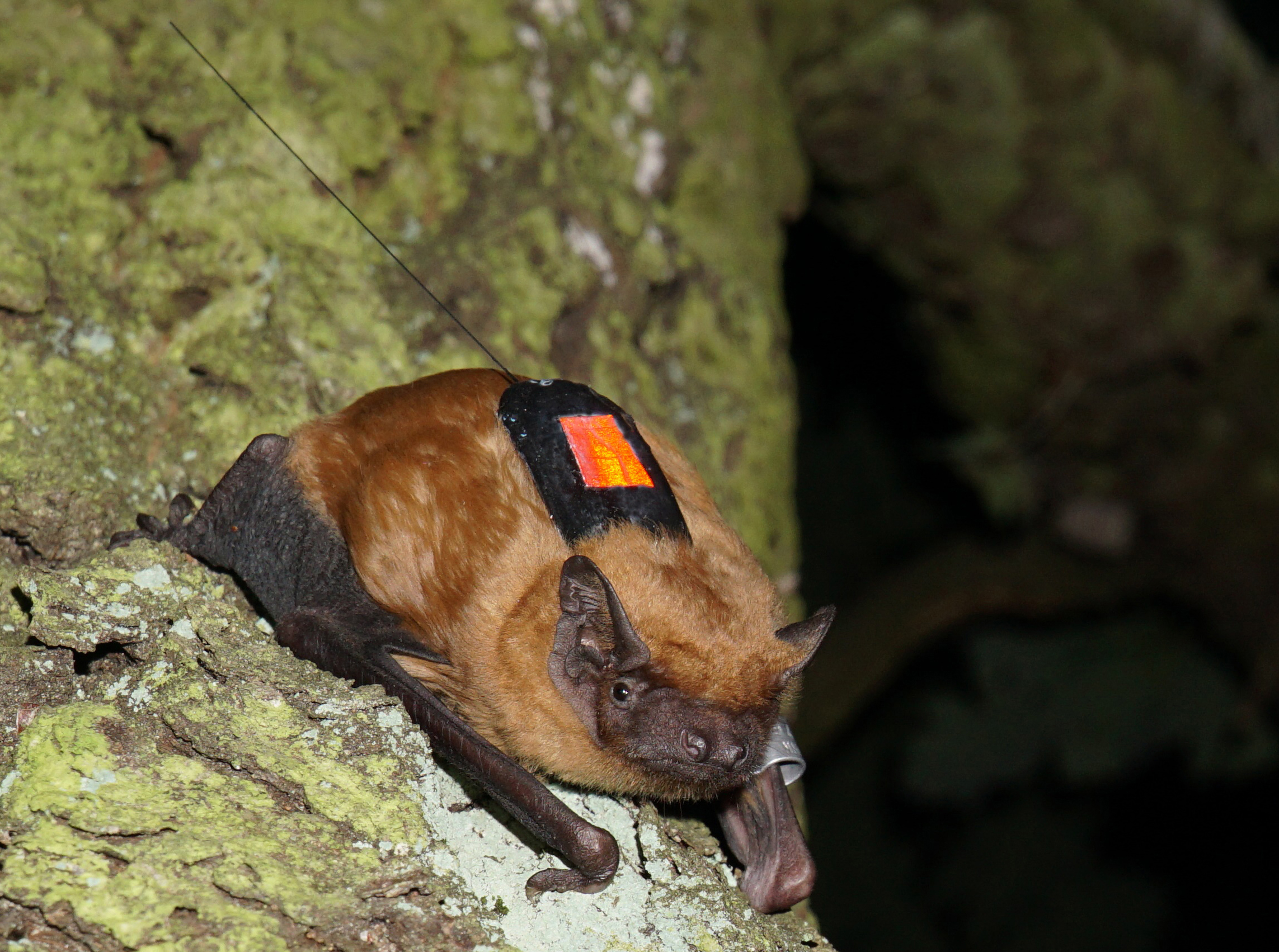Tracking system for animal research
The research group “BATS” (German acronym for ”Dynamically Adaptive Tracking Sensor Networks”), in which Fraunhofer IIS was also involved, has developed a tracking system for bats


Bat research made easy
The tracking system BATS allows observing social networks in free-ranging animals, tracking individual flight trajectories and monitoring physiological parameters such as heart rates. If an animal passes one of the base stations on the ground, the collected data is automatically transmitted and processed. With a total weight of just 1 g including housing and battery, it is also suitable for monitoring small animals without disturbing them.
Bats – a challenging application
The tracking system was tested and optimized on bats during several field visits in Berlin, the upland Franconian Switzerland in Northern Bavaria, Panama, Belize and Costa Rica. BATS provides a technology that could also be applied to other small vertebrates such as birds or lizards. An application for monitoring the health of farm animals to improve their living conditions is also conceivable.
BATS was developed by an interdisciplinary research group from the fields of electronics, computer science and biology; the project was funded by the German Research Foundation DFG. The Fraunhofer Institute for Integrated Circuits IIS supported the DFG research group in the development of the base stations, i.e. the infrastructure on the ground, whose primary task is tracking.
BATS
Besides Fraunhofer IIS, the following partners were involved in the project:
• Friedrich-Alexander-University Erlangen-Nürnberg (project management)
• Museum of Natural History Berlin
• Technical University of Braunschweig
• University of Paderborn
• Brandenburg University of Technology Cottbus-Senftenberg
• University of Bayreuth
Last modified: